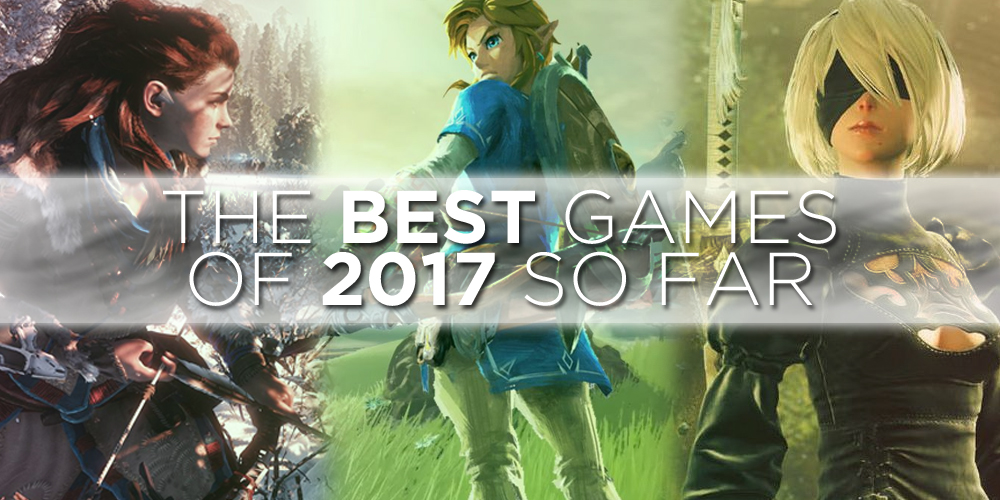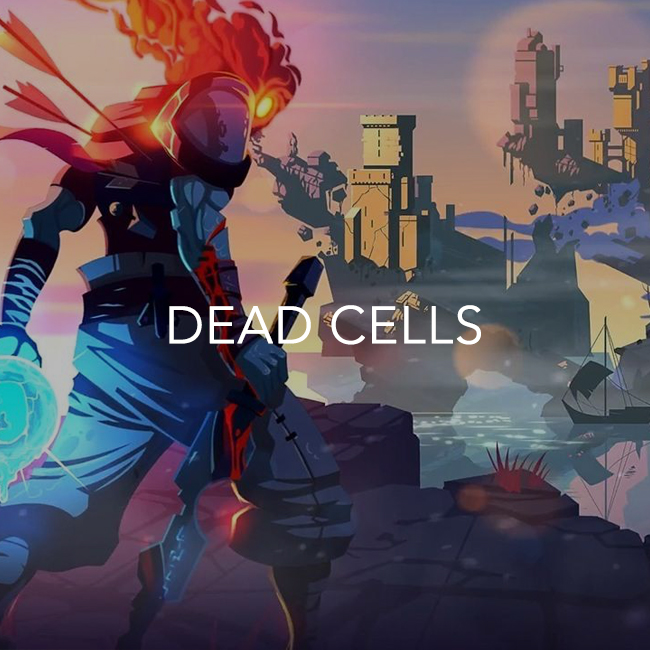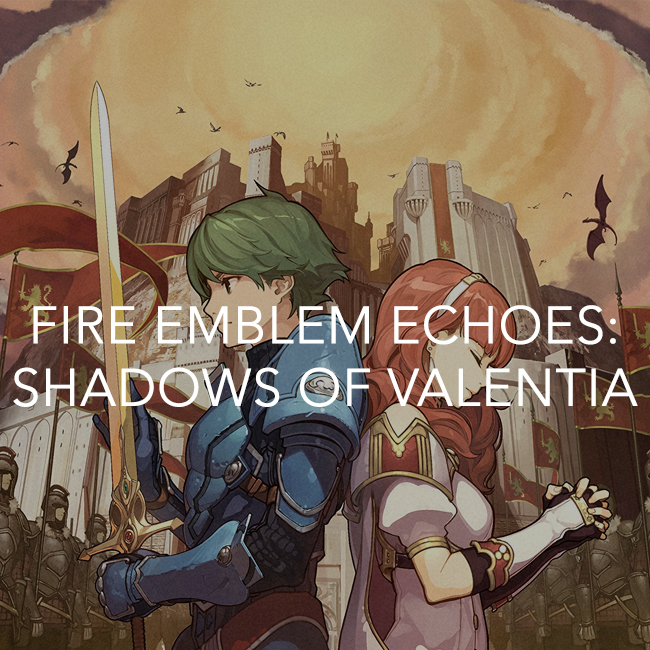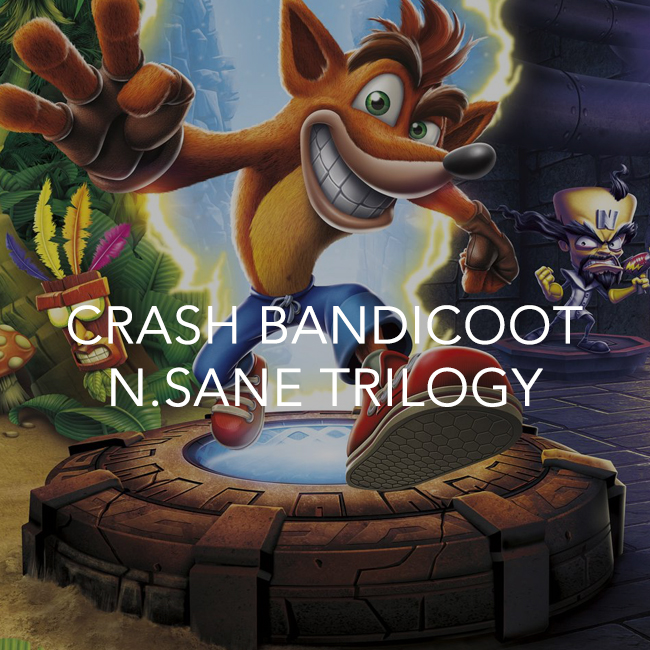

Chosen by: Lliam Ahearn
Released: January 27, 2017
Developer: Capcom
Platforms: PlayStation 4, Xbox One, PC
Resident Evil VII (RE7) had its work cut out for it. Climbing out of the deep grave RE6 had left the franchise in after its catastrophic reception was no small task, but that was only one of RE7’s hefty goals. Reinventing the franchise in a brand-new perspective while refocusing on the defining concepts of classic Resident Evil was another, placing Capcom squarely in the shadow of the cancelled Silent Hills – not an easy comparison to be subject to. How about being the first high-profile game to be entirely playable from start to finish in virtual reality? Capcom took a number of tremendous risks on Resident Evil VII, and they paid off.
Ethan and Mia’s story is presented with a level of care far above Resi tradition, retaining the elevated, campy tone without sacrificing the genuine motivations and conflicts of the characters. The Baker family are terrifying and unsettling both mechanically and narratively, and constantly discourage the player from going where they need to with their sheer presence. Facing off against Jack or sneaking past Marguerite is always empowering because it always takes courage. These are dreadful encounters that can all be experienced in VR, with these consistently intimidating characters getting right in your face.
Perhaps more importantly, RE7 is systematically robust, rewarding wise inventory management and offering tough decisions between ammo and healing. What makes the first Resident Evil so special to me is how rewarding it feels to uncover the map of the mansion, knowing each step further from a safe room is a calculated risk. RE7 provides the same feeling, with an interesting, atmospheric setting that expands more and more the further you go. It also doesn’t hurt that RE7 offers the best first-person shooting I’ve played in VR. Aiming with my head was so satisfyingly accurate, without the controlled feel of instantly sliding a mouse onto something’s head. How quickly and accurately you aim in RE7 directly correlates to how quickly and accurately you aim your own head, and it feels so good to do well.

Chosen by: Daniel Kizana
Released: February 8, 2017
Developer: Team Ninja
Platforms: PlayStation 4
I remember an Easter egg that was hidden in EA’s The Lord of the Rings: The Two Towers (2002); an interview with Sir Ian McKellen, in which he noted that, in his old age, he lacked the “mind/hand coordination” required to play video games. This stuck with me, and, as a 10-year-old, I worried that the same gradual loss of acuity would eventually stop me from being able to play games too. Fifteen years later, that fear was made manifest, in Nioh.
It took me 30+ attempts to kill the game’s second boss, Onryoki. I know, developers will often design a ‘gatekeeper’ boss, to prevent you from proceeding into the rest of the game until you’re ‘good enough’; for example, Bloodborne did it with Vicar Amelia (*triggered*). Onryoki, though; he was almost too much. For six days straight, I beat my head against the brick wall, to no avail. I had joined Sir Ian in the old man chair and was no longer one of the youthful gaming elite.
While this was going on at my house, the rest of the world was enjoying one of the most ambitious and artfully designed RPGs in recent memory. Nioh blended a feudal, samurai aesthetic with traditional Japanese demonology in a way that hadn’t been seen since the enormously successful Onimusha series in the mid-2000s. Gameplay can be summarised as a deepened take on Soulsborne combat, in a mission structure, on a world map, with Diablo’s loot system; a bizarre mix on paper, but one that was refreshing and engrossing in practice.
The true wonder of Nioh’s design, and likely its legacy in years to come, is found in its control system. Once mastered, Nioh, much like a martial art, is beautiful to watch. The controls are so loaded with systems that they border on tedium, but once you can master all the stance shifting, parries, timed stamina refunds and varying weapon move-sets, your avatar will dance through its enemies, without noise or fuss, as if it were the star of some morbid ballet. That’s how I beat Onryoki, in the end. Clearly, despite the ravages of time, I’ve still got it.

Chosen by: Patrick Waring
Released: March 2, 2017
Developer: Guerrilla Games
Platforms: PlayStation 4
With the speed at which it feels like we’re moving through the year, I’m worried that just by writing this I might break my neck by trying to look back. Horizon: Zero Dawn (HZD) was one of the first major titles out of the gate this year and really set the bar regarding overall quality for triple-A releases. It isn’t the most immersive open-world games to have ever been made, and the story is only just a little above-average. (Although, by sci-fi video game narrative standards, that could be considered high praise.) It does, however, feature some excellent voice acting, memorable characters, robotic beasts, high-tech caveman apparel and weaponry, and brilliant combat design.
HZD has an open-world in the truest sense, in that you can go pretty much anywhere after the beginning of the game. You might die in a somewhat messy way if you do, but the option is available, and the game is at its best when you get into a particularly difficult fight. There’s a real thrill to picking off the armour plating of a three-story-tall robot dinosaur, exposing the squishy, sensitive circuitry beneath, then peppering it with a stone-age style assault rifle. There are a couple of dozen enemy types, all of which behave differently, and a small arsenal of weaponry to upgrade and customise, providing the potential for every fight to be different and engaging. Honestly, if this game were entirely about hunting things down and had none of the narrative elements, it would still be one of the best games of the year.
It helps, of course, that the main character – Aloy – is voiced by Ashley Burch; a personal favourite voice actress of mine, who puts a sassy spin on a deranged hermit who talks to herself all the time. Throw in the occasional smooth, alluring, deep-bass voice of Lance Reddick, and HZD became an easy front-runner for GOTY. I’m looking forward to the inevitable sequel.

Chosen by: Alex Chalmers
Released: March 3, 2017
Developer: Nintendo EPD
Platforms: Nintendo Switch, Wii U
Here’s a small slice of shame I hold about myself that I’ll let you in on, just this once…I’ve never played a Zelda title for more than 5 minutes. For years, in my ignorance, I didn’t think I was missing out on much. However, after a couple of hours playing Breath of the Wild (BotW), I realised my entire life was a lie, and I am now committed to playing as much of Nintendo’s backlog of 30+ years worth of games before I die.
While not wholly ignorant of Zelda’s impact on the ever broad “Action Adventure” genre, I now see how deeply this series has influenced nearly every game I’ve ever loved. I’ve been playing Zelda clones for decades, and I didn’t fully know it. And now, Zelda can add “best open world game EVER” to its long series of accolades. BotW never ceases to amaze in just how consistently dense its world is and, more importantly, how naturally one’s discovery of in-game events, items and characters occurs. I barely check my mini-map and find myself getting lost for hours at a time – a rarity since I recently became a parent. Simply observing the world around you will provide you with an abundance of opportunities to discover new gameplay mechanics, challenges, items, and dungeons to explore. Better still, after years of being beaten over the head with anxiety-inducing levels of mission icons spasmodically plastered all over game maps in “UbiTower” titles, BotW’s trust in the player’s ability to think for themselves with minimal tutorialisation is a much needed reprieve from the “more is more” school of thought in what has quickly become one of gaming’s most over-saturated genres.
Breath of the Wild is arguably the most arresting game I’ve played in the last five years, let alone just 2017, and I can see myself playing it for the next five quite happily. I just wish I’d jumped on the bandwagon sooner…

Chosen by: William Kirk
Released: March 10, 2017
Developer: PlatinumGames
Platforms: PlayStation 4, PC
Every year we’re guaranteed to see a selection of blockbuster titles that are equal parts well designed, technically competent and expertly produced. They are not always the most surprising games, but you enjoy them none the less because they’re so well made. Now, imagine the complete opposite of this, and you have NieR: Automata director Yoko Taro’s style of games.
Yoko Taro is the kind of director who worries less about whether his games are “good” and more about whether they’re challenging conventions or trying to do something different. The original NieR is incredible because it pushed boundaries with its groundbreaking story and genre-bending ideas (not to mention an incredible soundtrack), but it’s also ugly as hell, very clunky, and has some seriously rubbish components. It’s no surprise it didn’t sell well, and it’s certainly not the sort of game I ever imagined a room full of corporate suits could agree was deserving of a sequel. And yet, that’s kind of what happened when action genre juggernaut PlatinumGames approached Square Enix a few years back to discuss a potential collaboration.
By combining Taro’s out there ideas with a developer who knows how to make phenomenal action games under the right direction, the result is a genre-bending RPG that doesn’t make any compromises. Whether you’re a fan of Platinum’s visceral combat and insane action set pieces, or the unusual ideas and thought provoking narratives of the Drakengard series, you will not be disappointed with NieR: Automata. While the overarching story might appear to be centred around androids fighting against machines in the far-distant future (and it’s excellent on that front alone), the game is also clearly holding up a mirror to the human race and using science fiction as a means to explore the human condition. How far you want to dig is really up to you, but to say this game has had a profound impact on me is an understatement. NieR: Automata is genuinely one of the most engrossing games I’ve ever played. It’s well designed, technically competent and expertly produced – exactly like a blockbuster game, except that it’s unique and surprising.

Chosen by: Ben West
Developer: Atlus
Released: April 4, 2017
Platforms: PlayStation 4, PlayStation 3
I don’t believe I’ve ever had a game meet and exceed my expectations as impressively as Persona 5 did this year, and given what high hopes I had, that’s really saying something. Shin Megami Tensei games themselves are always fantastic experiences; a genius mix of difficulty, flexibility, and intriguing story. The Persona spin-off series has set its place in this same space, adding in style, humour, and compelling characters. Persona 5 continues this trend and then some.
To call Persona 5 a stylish release is an understatement in the extreme. Combat, exploration, menus, even intermission scenes like post-combat and “next day” screens are splattered with the game’s own unique and classy style. Alongside the best cast of characters the series has had so far and some insightful improvements to the series’ combat system, this game impresses on every front. Ultimately, I preferred the overall tale of the Investigation Team versus the mysterious fog of Inaba from Persona 4, but I will still be replaying this game again and again over the years, just like I did its predecessors.
I could go on about every little bit of clever game design and gush over every well-executed scene throughout its length, but I worry I’d spoil the discovery for yourself (and also I’m only allowed this many words.) If you have never played a single Shin Megami Tensei game before, I personally urge you to pick up this game, regardless of your level of RPG experience. Prepare for an experience that will challenge you but offer some level of mercy, that will delight your visual senses and offer you unforgettable characters, and that will consistently manage to steal your heart.

Chosen by: Connor Weightman
Released: May 10, 2017
Developer: Motion Twin
Platforms: Microsoft Windows
Is it presumptuous to declare an Early Access game your favourite for the year so far? Perhaps so, but Dead Cells deserves to be talked just as much as any on this list.
It’s no coincidence that the game’s title alliteratively echoes Dark Souls (and yeah, I know you’re probably sick of hearing about “Soulslike” games by now, but hear me out, this one is good!). With hardly an introduction, your headless, nameless protagonist is thrust into a colourful, undead world. Combat is key, the game quickly gets difficult, and dying is inevitable (though never unfair). Here too, you’ll want to collect orbs (cells rather than souls, of course) from fallen enemies in order to purchase upgrades.
The similarities end there, though. Dead Cells is a 2D action platformer where death sends you back to the beginning of the game. Each dungeon randomly rearranges itself every time you play, so no two runs are ever quite the same. You begin every run with a trusty, rusted sword and one major choice to make: shield or bow? However, like all the best roguelikes, Dead Cells has a carry-over upgrades system with permanent unlocks so you rarely feel like you’re completely wasting your time. Rather, you’re forever incrementally crawling towards better equipment, a better understanding of the game, and perhaps one day – who knows? – successfully reaching the end.
It is gloriously addictive. An average run (for my pleb hands anyway) is just short enough to make it a dangerous vehicle for procrastination. The controls are swift and precise. The exploration mechanics make progress feel earned and organic, and there always seems like another secret to find just around the corner. I’m looking forward to seeing how the developers expand on it from here. It’s already damn good fun.

Chosen by: Nick Ballantyne
Released: May 16, 2017
Developer: Deck13 Interactive
Platforms: PlayStation 4, Xbox One, PC
Normally I’d have one hell of an opinion to throw at these articles, but this year, nothing’s bitten into my happy-nerves very deep. It’s not that this year has been bad – this list is a testament to that – I just haven’t gotten around to playing anything. Thankfully, I got to play The Surge while uni took over my life, so that’s what we’re going with for the article! Call it a cop-out if you want, I reckon The Surge neurally rubbed me the right way enough to earn its spot on the list.
Sure, I didn’t sing the game’s praises when it came time to review it, but I did have a lot of fun. The sheer amount of weaponry on offer in the game is mouthwateringly glorious. Being able to punch zombified factory workers with chainsaw fists may have felt a little weightless, but chainsaw fists are still chainsaw fists. There is even a little bit of depth in the punching to keep you interested, and while it doesn’t compete with Dark Souls, it is still an enjoyable system.
Where The Surge shines is in the boss fights. The devs were sadistically grinning as they designed these guys, not just from how badass they looked but how intimidating they came across in the game. When I faced off against the Firebug, a little piece of me felt a kind of giddiness I hadn’t experienced in a long, long time. It was as though the sight of being burned alive by a two-storey drone equipped with flamethrowers was as moving as the Pillars of Nosgoth. While it isn’t the most outstanding game, it’s still one of the best this year has had to offer.

Chosen by: Harry Kalogirou
Released: May 17, 2017
Developer: NetherRealm Studios
Platforms: PlayStation 4, Xbox One
The first Injustice did two fundamental things extremely well. It continued the legacy of strong DC licensed video games, and it delivered a mechanically deep fighting game that both new and veterans players could enjoy. As a fan of NetherRealm’s games, and especially of the source material Injustice bases itself on, I was extremely excited when a sequel was announced. With the promise of a bigger roster, new mechanics, and a brand new gear system, Injustice 2 had some mighty big shoes to fill.
Much like its predecessor, Injustice 2 features a full-length story mode that’s been crafted with love and respect for the characters and lore it so willingly uses. The roster of characters alone is enough to get a DC fan on board with flagship icons such as Batman and Superman to more obscure characters such as Doctor Fate and Blue Beetle. Couple all this with an original plot and stellar voice acting, and Injustice 2 definitely has one of the more memorable campaigns when it comes to fighting games.
Its successes don’t just come in the form of its story mode, though, as Injustice 2 is arguably the king of 2.5D fighters. Everything that made the first game great is back in full force with some minor tweaks and additions that further enhance the experience. Aside from this, the brand new gear system makes for a unique experience for each player, and if you pair this with the excellent online modes, Injustice 2 has a lot to offer in terms of its depth and replayability.
Whether you’re a fan of fighting games or the DC Universe, Injustice 2 absolutely delivers and is a must-play game.

Chosen by: Blade Shaw
Released: May 20, 2017
Developer: Intelligent Systems
Platforms: Nintendo 3DS
While I wouldn’t say Fire Emblem Echoes: Shadows of Valentia is the “best” game I’ve played in 2017 so far, it certainly was the biggest surprise for me personally. When a game is marketed as a remake of an older game, I’m usually split between being excited and trying to temper my expectations for what could be something terrible. What I found, though, is a wholesome game that embraces the new style of Fire Emblem while also harkening back to the JRPGs of old.
In trying not to repeat what I said in my review, the thing I loved the most about Shadows of Valentia is the narrative. While it doesn’t necessarily do anything new within the well-explored structures of modern day storytelling, it perfectly delivers the story it wants to tell and in a way that many other games struggle to do. As someone who champions story and narrative in games above anything else, Shadows of Valentia is a triumph for consistency and polish. In essence, it stays true to the Nintendo ethos of creating generally well-polished and high-quality games.
I would also argue that Shadows of Valentia is the BEST entry point into the Fire Emblem series I’ve come across so far – by comparison to 2013’s Awakening, which I was playing in unison. Doing away with the relationship and rock-paper-scissors combat systems from Awakening, Shadows of Valentia was stripped back to basics, and this allows for other fundamental aspects of the game shine through. If you’re looking for a game where you get a solid experience for your hard earned money, Fire Emblem Echoes: Shadows of Valentia is definitely worth the asking price.

Chosen by: Kit Fox
Released: June 30, 2017
Developer: Vicarious Visions
Platforms: PlayStation 4
Oh boy, here we go. Am I about to tell you that one of the best games of 2017 is, in fact, a remake of a trio of games from two decades ago? Yep, you bet I am.
Crash Bandicoot N. Sane Trilogy is, in my opinion, one of the best remakes of any game ever. I’m not going to get into how the ’90s was supposedly the golden age of gaming or that current games just don’t “do it right” anymore. All the time I could spend yammering about remakes and reboots, I could instead be smashing more crates.
The N. Sane Trilogy is a brilliant remake of some already pretty damn good games. It’s abundantly clear from the moment you start up this collection that a lot of love for the originals was present when Crash (and Coco!) spun out of the Vicarious Visions offices. The clearest sign of this is that the developers chose to keep the games pretty much exactly as they were, and just placed some gorgeous new graphics over the top. The only real difference is the ability to play as Coco in all three games instead of just the third, time trials being added to the first two games, and some very minor control tweaks to tighten up the gameplay.
I can’t begin to tell you how much I’ve enjoyed running and spinning through these games again. Crash Bandicoot N. Sane Trilogy is a remake done right. A respectful relighting of an old flame to guide fresh and familiar players alike back into one of the most iconic and identifiable series in all of gaming history. I’m once again looking forward to what comes next for Crash. Now, if you’ll excuse me, I’ve got a mad genius to smack and some platinum relics to unlock!

Chosen by: Callum McCole
Released: December 6, 2016/August 1, 2017
Developer: Mimimi Productions
Platforms: PC, PlayStation 4, Xbox One
While this game technically came out last December, it’s easy to miss releases around then, so we’re sneaking it through. That, and it’ll also be releasing on PS4/Xbox One next month, so it’s arguably a 2017 release.
Shadow Tactics: Blades of the Shogun is a stealth RPG along the lines of Commandos. In the game, players will take control of a small group of characters to sneak around various levels in order to complete objectives and take out guards along the way. To aid in your stealthy exploits, each character has a set of abilities, such as throwing rocks to distract guards as well luring them with a bird call or by planting traps. While it’s technically a stealth RPG, it almost plays like a puzzle game at times as each map has several areas that require you to think about how you can combine the utility of your party and experiment with different strategies to see what works. The maps are non-linear, and there is more than one route and method of advancing – although, it’s important to note that it’s still challenging despite being flexible.
The gameplay itself is fun, though I have to admit there’s nothing particularly unique or innovative about it. The presentation is what makes Shadow Tactics so special. It’s set in Edo period Japan with beautiful environments, artwork and music, and I found it especially immersive because I was able to play with authentic Japanese voice acting and English subtitles. All of the fantastic presentation elements come together to make it feel as if you’re going back in time to Feudal Japan, albeit a little on the cartoony side. The only issue I have is the controls can be a bit fiddly, especially for changing movement stances, and it’d be nice to have the ability to pause. Regardless, if you love history or Japanese culture and language, you may thoroughly enjoy Shadow Tactics: Blades of the Shogun.










